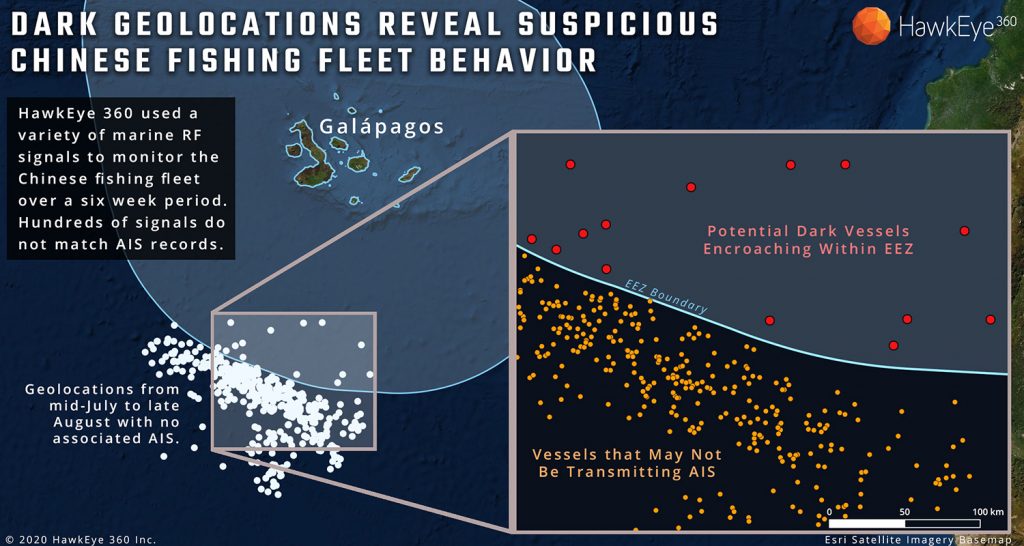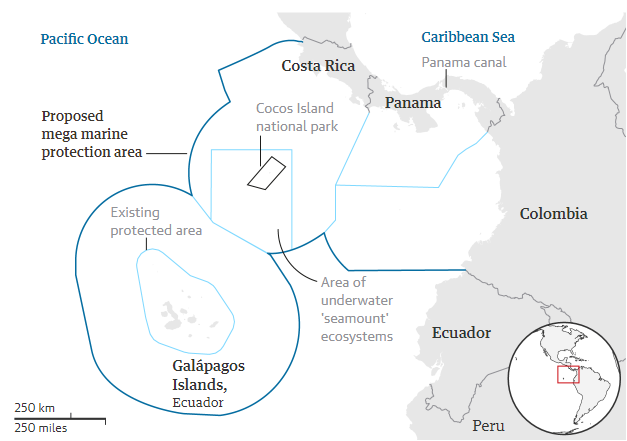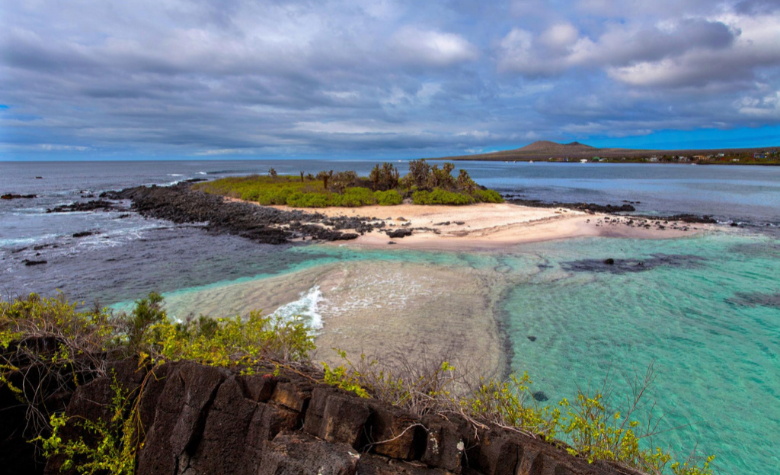President Lasso announced the Galapagos nature reserve will increase by 60,000 square kilometers in what he considers may become the largest conservation debt swap to ever occur.
The Galápagos Islands are an archipelago off the coast of central South America that comprise three main islands plus numerous smaller ones. They are located approximately 600 miles off the coast of Ecuador.
President Lasso made this announcement at the COP26 climate summit held in Glasgow last week.
This will increase the Galapagos nature reserve from its current size of 130,000 square kilometers to 190,000 square kilometers.
Brilliant First Step
The move is largely being applauded by conservation groups as “a brilliant first step“. However, some have raised concerns over how the enlarged conservation zone will be monitored & protected.
In particular, will the new plan adequately protect the Galapagos from overfishing by the large Chinese fleets that arrive each year?

President Lasso confirmed that the new enlarged protected zone will receive additional monitoring from the navy. He also added that the funds raised by the debt swap will allow for better technology & equipment to be used – resulting in more effective control of the protected area.
New 60,000 square kilometer protection area split into 2 equal zones
Under the new plan, the 60,000 square kilometers will be split into two zones.
1. No fishing zone
No fishing is allowed in the new 30,000 square kilometer zone to the northeast of the Galapagos. These are important migratory waters that connect the Galapagos with the Costa Rican protected area around Cocos Island.
2. No long line fishing
Fishing will be allowed in the area to the northwest of the Galapagos, but ecologically damaging long-line fishing will not be permitted.
Ecuador unites with Costa Rica, Panama & Colombia to create marine corridor
Also announced was the creation of the Eastern Tropical Pacific Marine Corridor (CMAR) initiative. In this joint initiative, over 500,000 sq kilometers will be protected across the territorial waters of Ecuador, Costa Rica, Panama & Colombia.
According to the Ecuadorian Environment Minister, Gustavo Manrique, this will create a “safe swimway” where “important endangered migratory species such as sharks, whales, turtles, and manta rays travel.”

Emphasis on protecting migratory species
Wildlife conservationists recognize the importance of connected protective zones in addressing the decline in migratory populations of turtles, rays and sharks. This includes the much-photographed and loved hammerhead shark population that breeds around the waters of Darwin Island in the Galapagos.
Biologist Alex Hearn explains: “Just protecting the waters around them is not enough. There’s a connectivity between the areas and that’s what we need to protect.”
The creation of a multi-lateral protection zone provides additional benefits as explained by Roque Sevilla, a supporter of the new marine corridor. He mentions that because the protected areas belong to sovereign nations, it will be easier to enforce protection mechanisms like the presence of inspectors on board fishing vessels or denying food & fuel to vessels in breach.
Debt Swap Options Still Being Considered
Whilst the initiative is largely seen as a positive step, it still needs to be brought into effect. President Lasso is expected to sign the decree in December 2021 or January 2022.
However, the President does not expect substantial pushback from the impacted fishing community because: “it is the result of five months of dialogue, which we’ve held with small-scale and industrial fishermen. For that reason, I don’t expect any problem of rejection or protest because it is a consensual decision.”
We’ll need to see which debt swap proposal the Government will go with and any conditions attached to it.
President Lasso stated: “We are studying some proposals, but there is also a possibility that the country itself can, with the support of multilateral credit organizations, carry out this debt swap so that all the benefits are placed in a trust, where the sole beneficiary is the Ministry of the Environment. The idea is to build a financial structure, a financial institution that allows the Ministry of the Environment to have resources in perpetuity with a single objective: the preservation of these marine reserves ”, continued Lasso.
“We estimate that it will be the largest amount of debt for conservation that has been made so far in the world,” Lasso concludes.



















